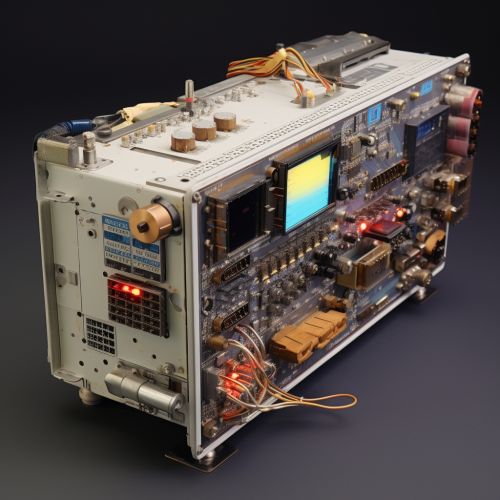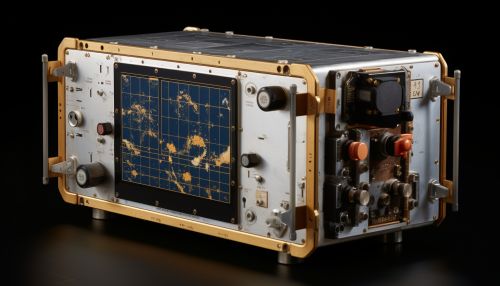Apollo Guidance Computer
Overview
The Apollo Guidance Computer (AGC) was a digital computer produced for the Apollo program that was installed on board each Apollo Command Module (CM) and Lunar Module (LM). The AGC provided computation and electronic interfaces for guidance, navigation, and control of the spacecraft. The AGC was one of the earliest integrated circuit-based computers.
Design and Construction
The AGC was designed and built by the MIT Instrumentation Laboratory (now Draper Laboratory), with manufacturing of the hardware done by Raytheon. The AGC was a 16-bit computer with a core memory of 36K words and a hard disk of 2K words. The computer was constructed using integrated circuits (ICs), a relatively new technology at the time. The ICs were dual 3-input NOR gate modules, which were housed in flat packs. The AGC's design was based on the concept of "fly-by-wire", where the computer was directly controlling the spacecraft's thrusters and other systems.


Software
The software for the AGC, known as the Apollo Guidance Software, was written in assembly language. The software was stored in a read-only rope memory, which was physically woven by hand. The software provided the astronauts with a user interface, known as DSKY (Display/Keyboard), that allowed them to input commands and receive information from the computer. The software was capable of performing complex calculations for navigation and guidance, as well as controlling the spacecraft's systems.
Operation
During a mission, the AGC would continuously compute the spacecraft's position and velocity, and compare these with the desired trajectory. If a discrepancy was detected, the AGC would calculate the necessary corrections and then send commands to the spacecraft's thrusters to adjust its course. The AGC also controlled the spacecraft's attitude by commanding the Reaction Control System (RCS) thrusters. In addition, the AGC was responsible for controlling the Lunar Module's descent to the lunar surface and its ascent back to the Command Module.
Legacy
The AGC was a groundbreaking piece of technology that played a crucial role in the success of the Apollo missions. It was one of the first computers to use integrated circuits, and its design and construction techniques paved the way for the development of modern computers. The AGC's software was also notable for its reliability and robustness, with no software bugs ever causing a mission failure.
